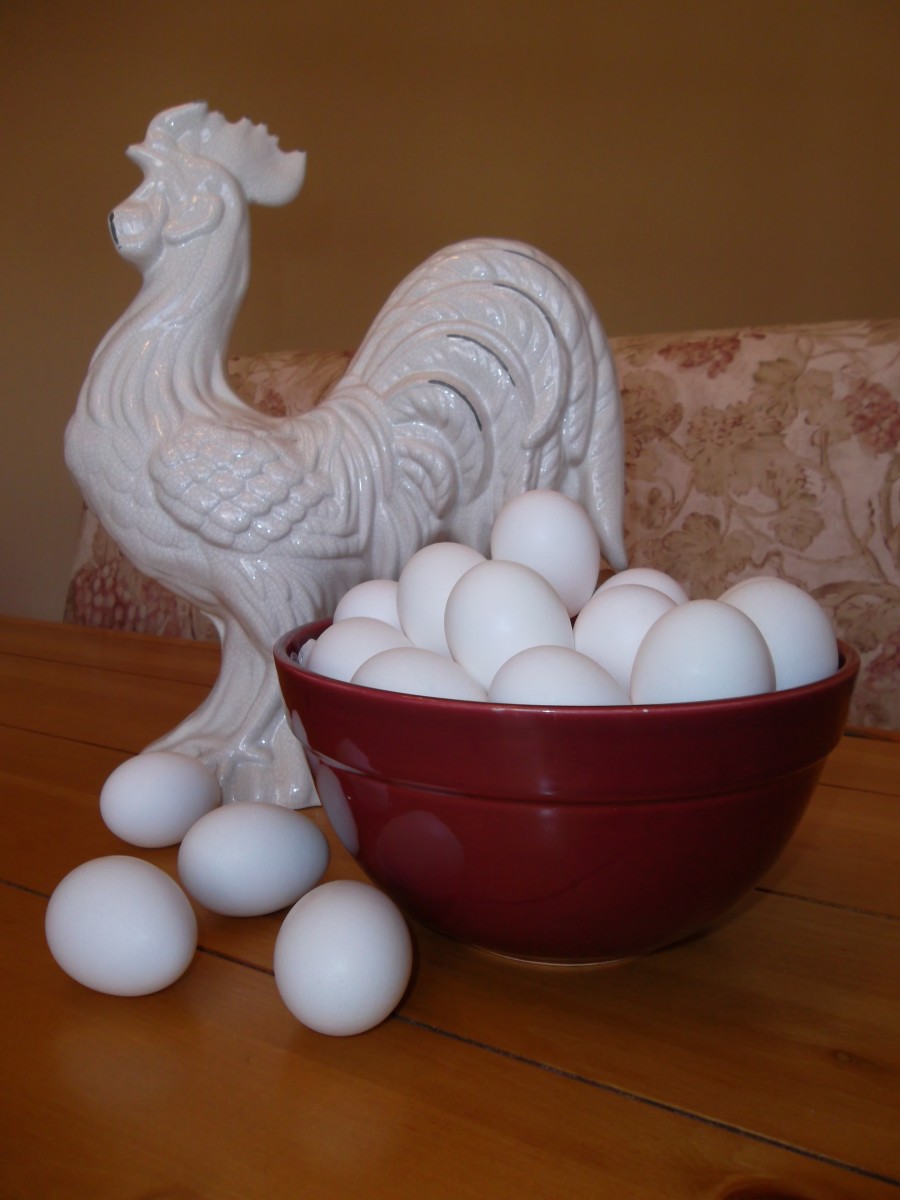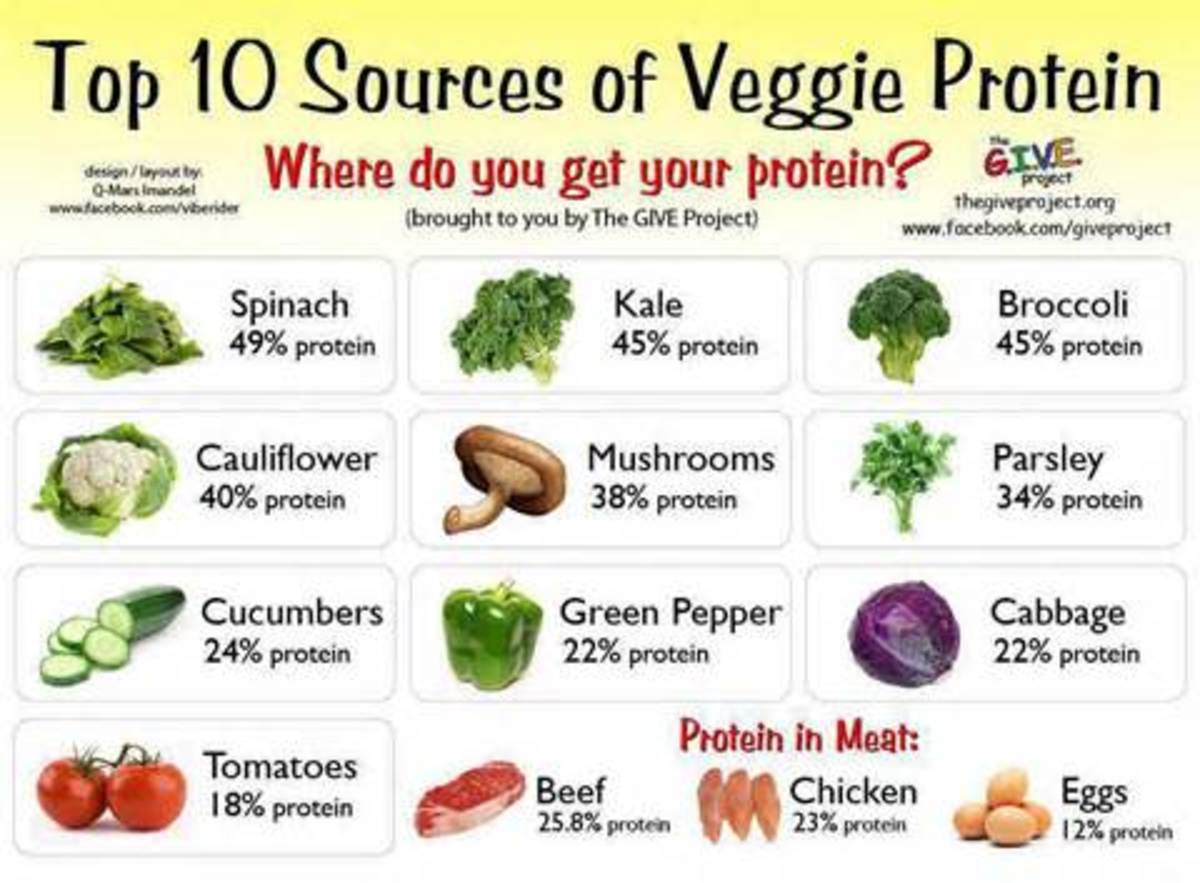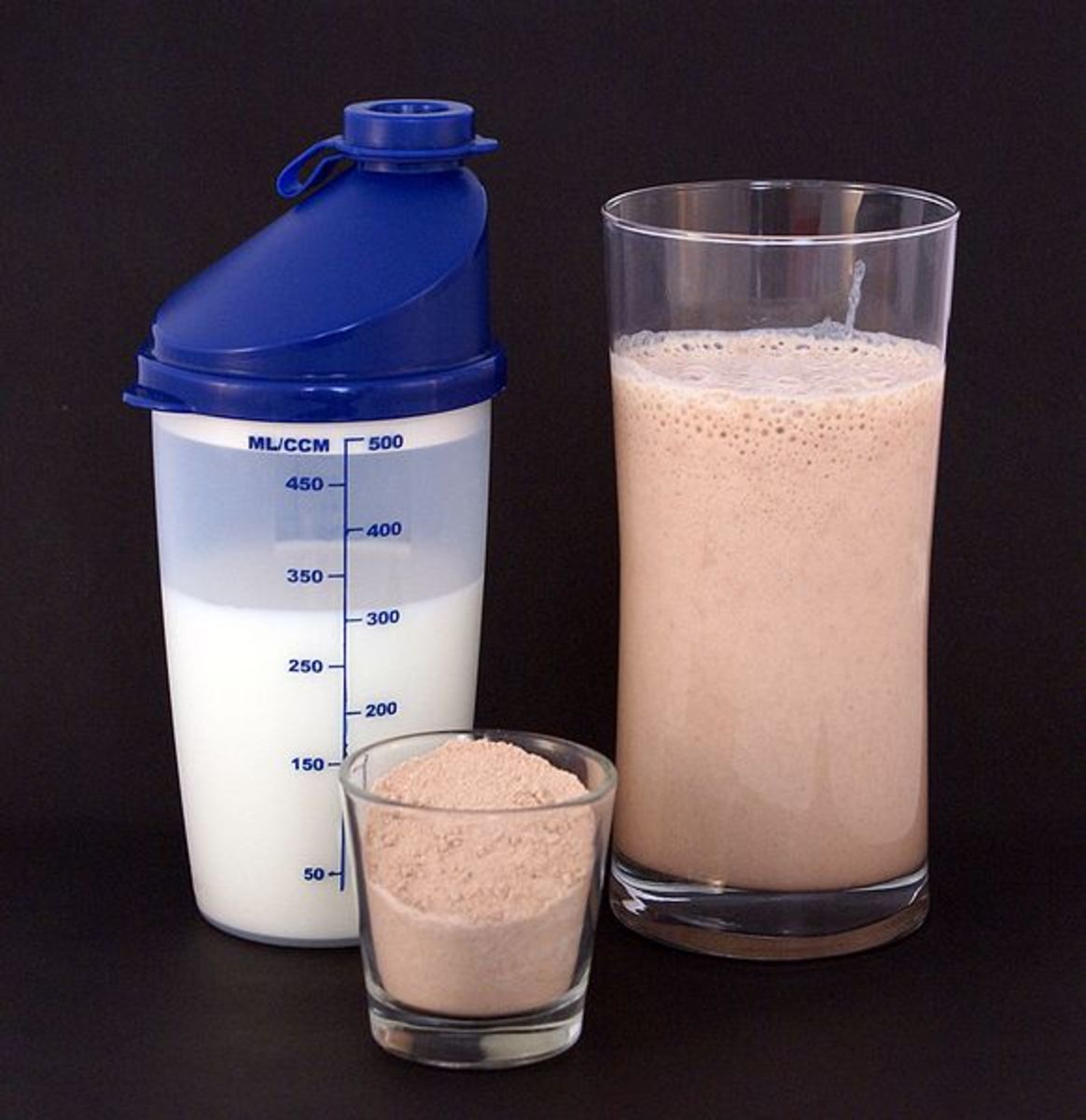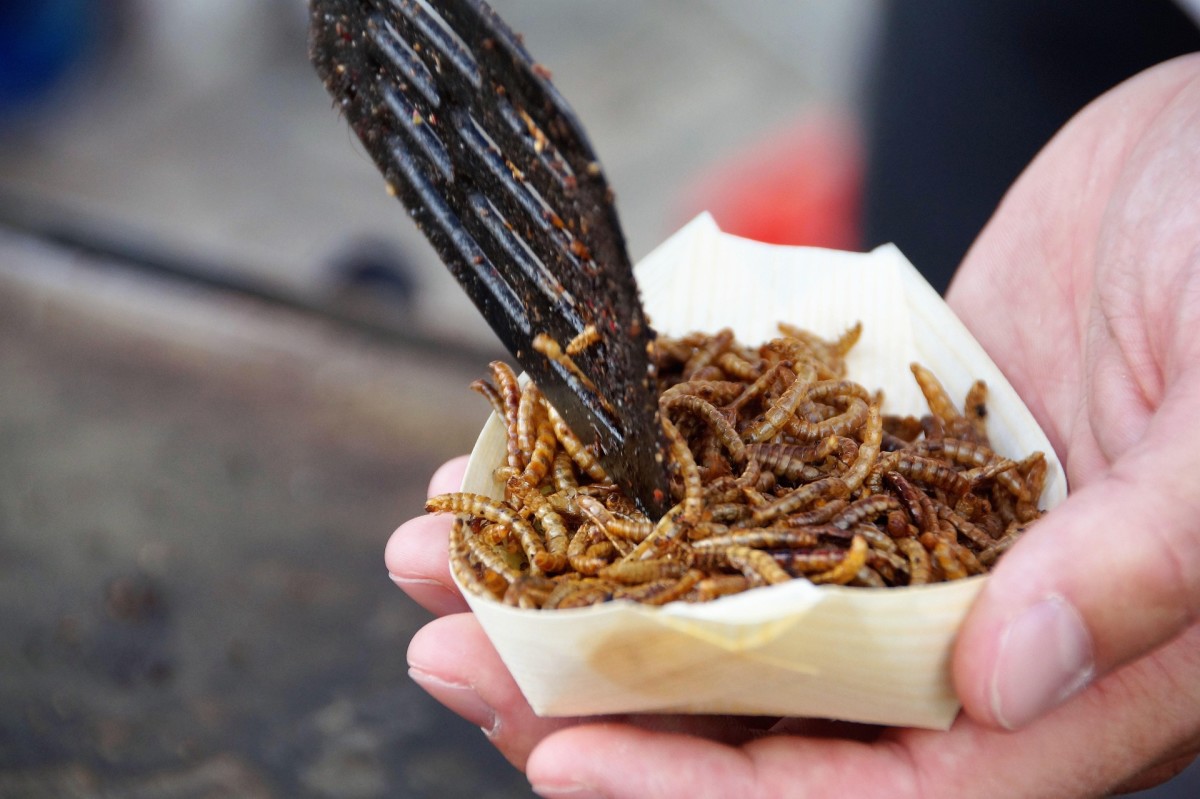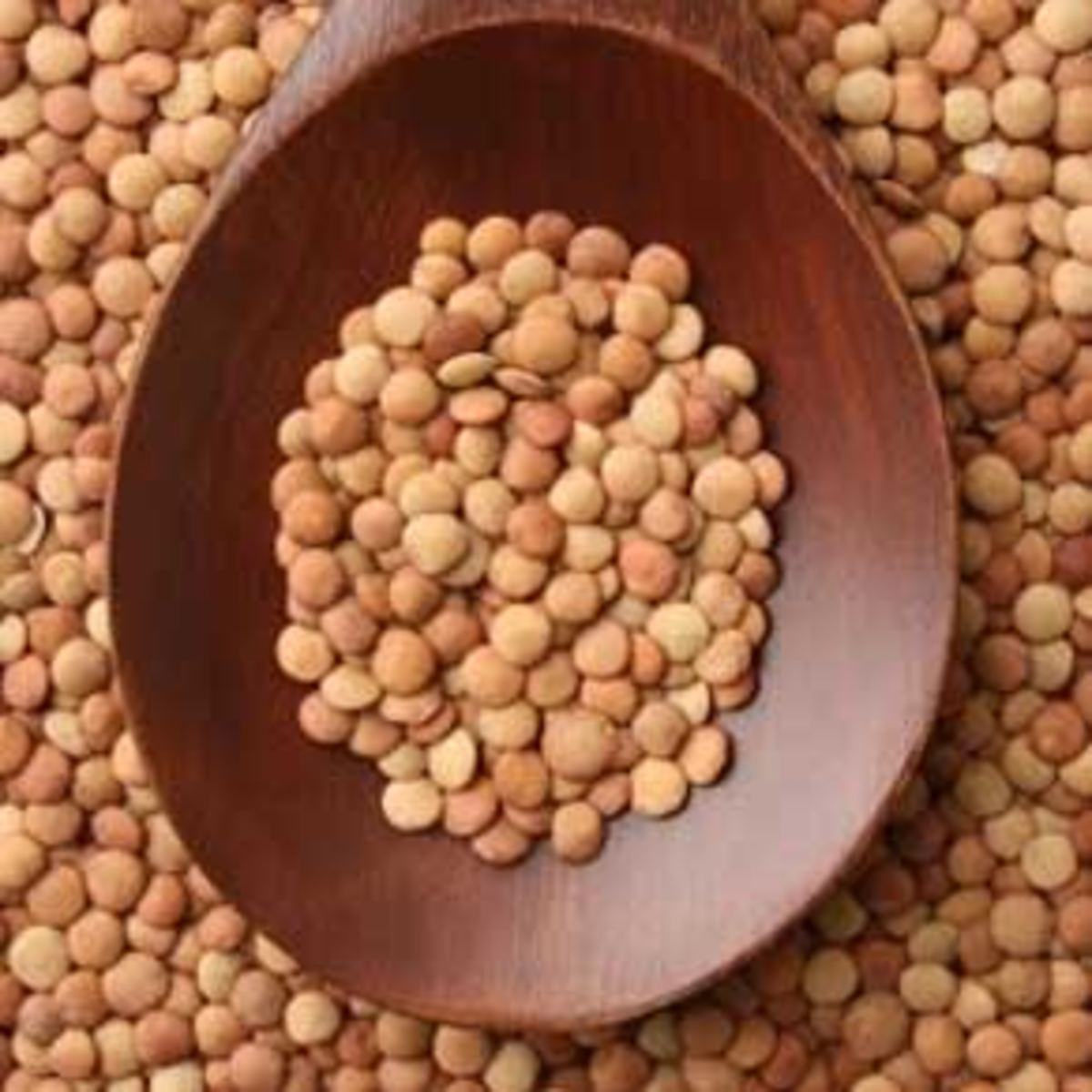Protein for Vegetarians
Vegetarian Diet : Do we get sufficient protein?
Sometimes we do seriously consider the point - 'Should we become vegetarians and give up eating meat'. At times, we do want to take the decision for giving up non vegetarian altogether, but one of the inhibitions, which keeps this decision at bay is, 'how shall we meet our daily Protein requirement, if we stop eating meat'.
It is a general impression in the minds of most of us that if we become strict vegetarians, we shall be lacking the required quantity of Protein in our daily intake of food.
Believe me; the inhibition is more based on the myth rather than fact.
If we choose our diet carefully, there are plenty of items which can more than take care of our daily 'Protein' requirement.
A normal healthy male needs about 50-55 gms of protein per day and a normal healthy female required around 40 to 45 gms of protein daily.
Protein is found in many items of our normal daily vegetarian diet, but we may not get sufficient protein if we are not careful about choosing our food items.
In order to ensure that we get the requisite quantity of protein, we have to include some of the following items in our daily intake.
The mentioned items are vegetarian by source and quite rich in 'Protein' content. By adding some of these, as per region /country specific availability, we can ensure that we get sufficient protein even by restricting ourselves to pure vegetarian diet.
Studies even reveal that protein from vegetarian sources is better as compared to the one obtained through non vegetarian sources.
Vegetarian protein is able to maintain lower cholesterol levels and thus reduces the risk of heart diseases.
Vegetarian Items containing protein : Let us look at some of the food items that are vegetarian by source and yet high in protein content
1. Soya Bean : Soya bean is a rich source of protein. It is available in various forms and can be conveniently cooked and consumed in all forms.
As Vegetable : It is available as a vegetable and can be cooked like any other beans.
Soya Bean as vegetable

Soya Bean as Pulses

One cup of cooked soya bean provides around 29 gms of protein.
Available in the form of Pulses : Seeds from the vegetable are extracted and dried and is available in the seed form like all other pulses such as lentils, kidney beans etc. This format of soya bean is classified in the category of oil seeds.
The seeds form of soya bean can be boiled and tastefully consumed just by sprinkling some salt, pepper and a few drops of lemon juice, if desired. This can be a rich form of protein in our breakfast or any other meal.
This variety can also be cooked just the way kidney beans or lentils are cooked.
Soya Bean as Chunks

One cup of soya bean seeds provide around 29 gms of protein.
Chunks / Nuggets / Granules form : After the oil is extracted from these seeds, the other varieties in which soya bean is available are Soya granules, chunks or nuggets.
This can be cooked with rice or can be added as additional ingredient while cooking other vegetables.
Black Eye Peas

Lentils

Chick Peas

Kidney Beans

Protein Supplement :
Soya bean is also available in extracted protein powder form and is sold as 'Protein Supplement' in the name of 'Soy Protein'. Quite similar to this is another supplement 'Whey Protein'. Both varieties are good providers of protein. Out of the two varieties, the second one is more beneficial for the purpose of muscle building. Soy protein is easy to absorb and can be used for full filling our body's protein requirements.
Soya Milk : Benefit of Soya bean protein can also be taken in yet another form i.e Soy Milk. Hundred grams of Soya milk provides around 6 gms of protein.
Tofu : Tofu is another product made from Soya bean. It is similar to cottage cheese. Cottage cheese is a product made from normal milk whereas Tofu is derived from Soya bean milk. Tofu can be used just the way cottage cheese is used. The quantity of protein is more in Tofu as compared to Cottage cheese. Tempeh is another variety of similar product derived from Soya bean and is high on protein content. It is somewhat similar to Tofu.
100 gms of Tofu provides around 7 gms of protein.
2. Kidney beans, Lentils, black eye peas, Chick peas, other whole pulses etc. All whole pulses (having outer crest retained) such as lentils, kidney beans, chick peas, black eye peas etc are a rich source of protein and should be consumed on regular basis for fulfilling our protein nutrition needs. Variety also gives the change of taste.
One cup of cooked Lentils provide around 16gms of protein. Same quantity of cooked Kidney Beans provide around 15gms of protein. One cup of cooked chickpeas gives around 12gms of protein.
Brazil Nuts

3. Nuts and dry fruits : Various dry fruits such as Almonds, Cashew nuts, Brazil nuts, Peanuts, Walnuts are rich source of protein.
While these nuts provide us high quantity of protein, we should not be very liberal in their use for two reasons.
Firstly, apart from protein, these nuts also contain high value of fat. Secondly, these nuts have warmth value. While in cooler countries one can easily consume them raw, in the hotter countries or in summers, one should keep them soaked in water for overnight and then next morning these can be consumed preferably after removing the crust particularly for almonds. Cashew nuts may not be soaked but consumed sparingly. Walnuts can be soaked but there is no need to peel the outer layer.
Consumption of around 23 almonds gives 6 gms of protein. Consumption of 6 brazil nuts gives around 4gms of protein. One ounce of Peanuts gives around 6gms of protein while an ounce of walnuts gives around 4gms of protein.
Chia Seeds

4. Wonder seeds :
i) Chia Seeds : These seeds are small in size and have different colors such as brown, black or white. Mainly grown in Central America, these seeds are very rich source of Protein.
These seeds are called wonder seeds as they also have many other health benefits.
Chia seeds are very high source of protein.
These seeds provide much needed Omega 3 fatty acid that too through vegetarian source.
Our body through its own metabolism cannot produce all types of 'Amino acids' which are needed by us. By consuming Chia seeds we get the desired 'Amino acids'
Chia seeds help in reducing blood pressure.
These seeds contain high quantity of fiber, thus good for maintaining the sugar levels and are also useful for digestive system.
Their benefits also include maintaining of cholesterol levels.
Chia seeds have antioxidant properties.
These seeds also give us Calcium and other minerals such as Phosphorus, Manganese and Potassium.
For consuming Chia seeds, we can simply sprinkle it over any dish such as pizza, pasta or cereal or can just add in liquids such as juice, lime water etc and drink it.
Quinoa Seeds

ii) Quinoa Seeds :
Just like Chia seeds, Quinoa is another variety which can be termed as 'Wonder Seeds'. Although it is a vegetable seed, it is normally classified as a whole grain.
It is predominantly grown in South America.
Quinoa is also full of various health benefits.
It is rich source of Protein.
It has antioxidant properties.
It contains high levels of fiber. Thus it helps in good digestive system and lower cholesterol levels thereby reducing the possibilities of heart diseases.
It helps in maintaining sugar levels.
It is a rich source of vitamin B6, iron and magnesium.
It provides all types of Amino acids.
Chia seeds and Quinoa may be comparatively a cheaper option for the people in North and South America. Though these seeds are available worldwide the cost elsewhere is bound to be higher because of the transportation costs of shipments across the globe.
Pumkin Seeds
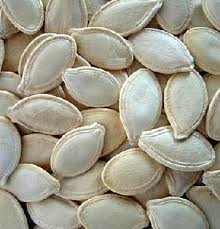
Sunflower seeds

Pearl Millets

Sorghum Millets

Foxtail Millets

5. Other Seeds : Sunflower seeds, Pumkin seeds are high source of protein. These can be consumed raw by removing the outer crust.
6. Millets : Millets is a variety of grain and is grown across the globe. However, majorly it is grown in African and Asian countries. India and Pakistan are large growers of this crop.
There are many varieties of Millets such as Pearl Millets (Bajra-In Hindi), Sorghum Millets (Jowar-in Hindi), Finger Millets(Manduva or Ragi-In Hindi), Barnyard Millets (Jhangora - In Hindi), Foxtail Millets (Kangni in Hindi), Little Millets (Kutki In Hindi).
The varieties of millets are rich in protein, iron, magnesium, phosphorus, and potassium. Ragi or Finger Millet is very rich in Calcium also. Out of all varieties Foxtail Millets are very rich in Protein.
All millets are rich in fiber and also contain vitamins such as B complex and vitamin E.
Millets also give us Amino acids.
These seeds also contain phyto chemicals which help in reducing the cholesterol.
Millets are also instrumental in reducing the risk of cancer. The best part is these seeds are least allergic and digested very slowly. Slow digestion helps in slow release of glucose. Thus helps in controlling the blood sugar levels.
In most of the countries where rice and wheat are used for staple diet, millets are generally considered as a low variety of food and are also used as fodder for animals. These grains are treated as lower variety of food for two reasons. Firstly these are comparatively lower in price, secondly these are not polished on the lines of rice or pulses. So appearance wise their look is quite coarse. As a first impression we tend to discard them vis-a-vis rice or wheat. Whereas nutritional value wise, one can compare them with quinoa or other rich varieties mentioned above.
Now, the question is whether we should go for millets or go for Quinoa or Chia seeds. The answer to this lies in the availability factor in the area where you live. For example, for people living in Asian countries where Millets are easily available and Quinoa may be scarcely available in super stores that too at a very high price, prudent decision would be just to go for millets. However, it is purely up to you whether cost is of any consideration or not. Same way for people living in South or North American countries, Quinoa or Chia seeds may be easily available as compared to millets.
Millets can be used by consuming their flour directly just as wheat flour is used. However, it may take some time for us to get used to change of taste. Another option is to mix around 1/10th part of Millets flour in the wheat flour and use the combined mixture in the same way as you use the wheat flour alone.
7. Cottage cheese : Cottage cheese is prepared from milk just as Tofu is prepared from Soy milk. Cottage cheese can be called a complete protein as it contains all kinds of amino acids needed by us.
100 gms of cottage cheese provides around 32 gms of protein. It also gives around 38% of our daily requirement of Vitamin B12, around 18% of calcium and 48% of phosphorus.
8. Peanut Butter : Peanut Butter is another good source of protein. 20gms of peanut butter gives around 5gms of protein.
Avocado

9. Fruits : - Avocado :
Avocado is a very healthy fruit and has various nutritional properties. In terms of protein 100 gms of avocado gives 2 gms of protein. Other nutritional benefits include high fiber, potassium, magnesium, vitamin C, vitamin B-6 and iron.
- Apricot : 100gms of Apricot gives around 1.5gms of protein.
- Other fruits: Other fruits that provide protein but in lower quantity are Bananas, Blueberries, Fig ( fresh fruit and dried)
10. Vegetables - 100gms of the following vegetables give protein mentioned against each
Spinach : 2.9gms
Broccoli : 2.8gms
Sweet corn : 3.2gms
Brussels sprout: 3.4gms
Spirulina

Spirulina Supplement ( Tablets )
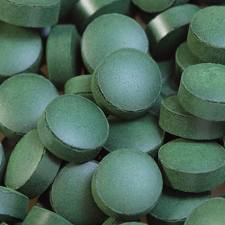
11. Spirulina :
Spirulina is not a plant. It is an algae grown in water. It is full of medicinal and nutritional properties. Extremely rich source of Protein, it provides 57gms of protein per 100gms of spirulina.
Despite a vegetarian source, its protein contents are much higher than even beef or any other kind of meat or fish.
It contains Beta Carotene many times more than in carrot.
Medicinal properties of spirulina :
- It is anti Oxidant,
- It is anti Cancerous,
- It improves the immune system of our body,
- It cleans the toxins from the body,
- It reduces the cholesterol level thus helps preventing heart diseases,
- It reduces the fatigue and enhances the energy level,
- It is helpful for patients having depression, anxiety and nervousness,
- It is helpful for patients suffering from insomnia,
- It controls the high blood pressure,
- It has anti aging properties,
- It is good for anemic patients because it is rich in iron,
- It improves the nervous system in our body,
- It is helpful in enhancing the memory,
- It is helpful in healing of injuries,
- It is useful in maintaining good skin and eyes,
- It is helpful in regulating sugar levels,
- It is good for digestion system as it contains useful bacteria,
- It is anti allergic
Nutritional values of Spirulina :
- A very rich source of protein ( gives much more protein than any animal source)
- Very rich source of iron,
- very high contents of Beta Carotene,
- It gives vitamins including B 12,( gives more B-12 than even animal liver).
Generally vitamin B12 is lacking in vegetarian diet.
- It gives all essential amino acids
- It contains lot of minerals such as iron, potassium, magnesium, sodium,
phosphorus, calcium etc.
Dosage: One should start on a very small level of 1gm per day. If you do not like the taste in the beginning, you can mix it with fresh juice and then consume. Slowly, the dose can be increased up to 5gms per day. After consuming Spirulina for 21days, break for a few weeks should be given after which the dosage can again be repeated.
Spirulina as supplement: If spirulina as a plant ( algae ) is not available easily in your area, one can choose to consume Spirulina available in the market in the form of supplement from a reputed company to ensure that spirulina grown in clean and hygienic conditions is used in preparation of supplement.
The supplement is available in powder, tablet or capsule form.
There is another algae named ‘Chlorella’ which quite similar to Spirulina. Both have quite similar properties and both are rich in protein. However, Spirulina is easier to digest. If the availability of Spirulina or Spirulina supplement is not there in your area, you can go for Chlorella supplement as an equivalent substitute.
Side Effects of Spirulina: While consuming Spirulina, sometimes stool becomes green or black because it cleanses the body. The side effects may vary from person to person. Some persons may develop constipation or diarrhea or mild fever or even body rashes. All these symptoms are because of the cleansing effect of Spirulina.
If symptoms are severe, the consumption may be stopped or doctors advise may be sought.
Precautions: Persons with hyperthyroidism, severe allergies to seafood or those running high fever should avoid consuming spirulina.


